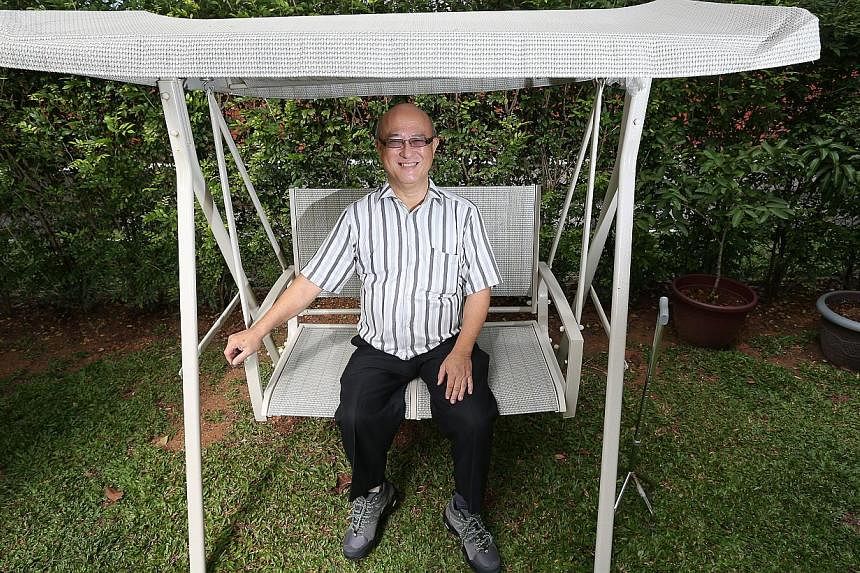Placing Singapore on the world map was never Dr Kho Tek Hong's aim.
But the former mathematics teacher and curriculum specialist led a team which did just that - by coming up with the Singapore way to teach the subject.
The method - founded on the concrete-pictorial-abstract approach, which helps pupils grab concepts such as fractions and comparison - has made its way to other countries.
At least 12 countries - including the United States, the Netherlands, India, South Africa, Australia and Brunei - are using textbooks based on Singapore maths.
American educators took notice after Singapore students registered top performances in the 1995 and 1999 Trends in International Mathematics and Science Study, an international study by the International Association for the Evaluation of Educational Achievement.
In the latest Programme for International Student Assessment (Pisa), held in 2012, Singapore students came in second in maths, behind their peers in Shanghai. Pisa is a global study of 15-year-olds' abilities in maths, science and reading, carried out by the Organisation for Economic Cooperation and Development (OECD).
But four decades ago, things were very different, said Dr Kho, 68, in an interview with The Straits Times.
At least a quarter of Primary 6 pupils failed to meet the minimum numeracy level, a survey by the Ministry of Education (MOE) in 1975 showed. Tests in 1981 also went on to reveal that many primary school pupils had not mastered basic maths skills such as division.
By then, the ministry was already looking into the problem through the Curriculum Development Institute of Singapore, which was set up in 1980 to develop good quality teaching and learning materials for all subjects.
And Dr Kho, then 34, was the man tasked with solving the maths problem.
"In the 1970s, learning was very passive and students learnt by memorising and imitation," said the former Raffles Institution and Hwa Chong Junior College teacher who was to lead a team of nine specialists.
"Students followed teachers' examples without really understanding. Maths was a mechanical practice."
The challenge facing the Primary Mathematics Project: How to make an abstract subject easily understandable to pupils at a time when English proficiency was quite low.
The answer was pictures.
After research which took Dr Kho and some team members to 10 countries such as Israel, France, Japan and Canada, some American learning theories caught their eye. One was psychologist Jerome Bruner's theory in the 1960s that people learn in three stages: First by using real objects, then by using pictures, and, finally, by using symbols.
Another theory was the part-whole approach by professor of education at Stanford University James G. Greeno. It involved looking at quantities in terms of the relationships between parts and a whole.
The theories led to techniques such as the model method, which refers to the use of bar drawings that visually represent quantities.
Former Raffles Institution maths teacher Hector Chee, who was part of the Singapore team, said: "You teach maths by understanding, and the pictorial method works because it helps students visualise and solve problems."
The 81-year-old added: "One of the hardest topics in maths is algebra, because it uses formulae, numbers and letters. So the model method helped to translate 'ABCs' into blocks."
When the team first presented the model method to teachers in the early 1980s, it was a hit.
"In fact, they liked it so much that they went overboard, and started to insist that students use it for every single problem sum even when it was not necessary," said Dr Kho, who holds a PhD in applied mathematics from the then University of Singapore.
Both men have since retired - Mr Chee in 1995, and Dr Kho in 2007.
The project, which lasted from 1980 to 1996, produced three editions of textbooks which were used in primary schools for more than 20 years until the early 2000s.
The new textbooks used in schools now still rely on the model method.
Fellow educators such as Madam Liu Yueh Mei said Dr Kho had a key role in raising Singapore's maths standards.
The 41-year-old former curriculum planning officer who worked with him in the 2000s through two reviews of maths curriculum at MOE, said: "His contributions to maths education here is phenomenal.
"Most people stop at learning theories but what he did was to translate them into practice.
"He created a tool - the model method we know - and that made the most impact on the ground with teachers and students."
Married to a retired Chinese language teacher, Dr Kho, who has four children, continues to work part-time as a consultant to MOE and keeps in touch with trends in schools.
"Today, maths and language standards have gone up, and it's a lot more competitive," he said.
"Some years ago, there were complaints from parents that the language used in exam questions was too complex.
"At times, language in problem sums can get quite confusing, so we should be very careful to not let language hinder the learning of mathematics. But this has since improved."
Looking back, he described the Primary Mathematics Project as his "whole life's effort".
He said: "I just wanted to do a good job helping teachers teach maths and students learn maths."


